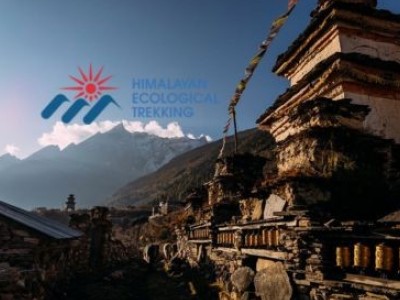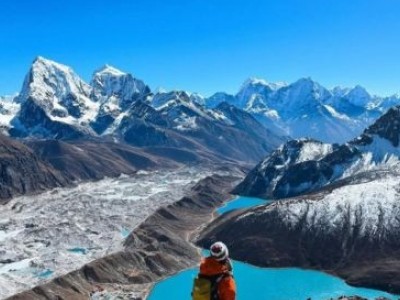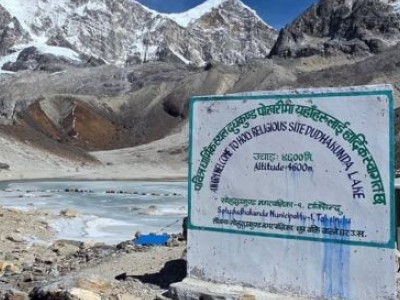Overview of Pikey Peak Trek
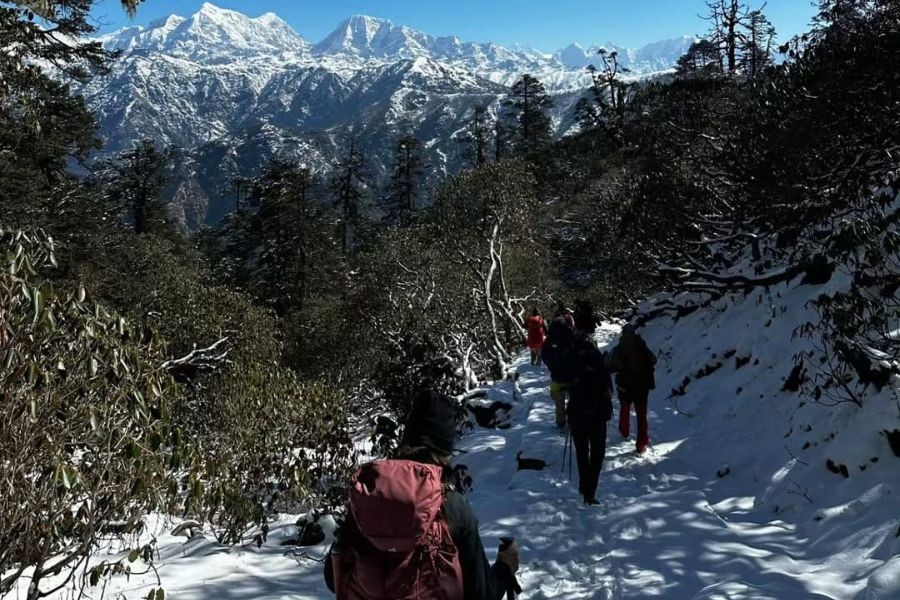
Nestled in the lower Everest region of Nepal, Pikey Peak stands as a hidden gem among the Himalayan trekking routes. Rising to an elevation of 4,068 meters (13,347 feet), this magnificent viewpoint offers one of the most spectacular panoramas of the Himalayan range, including Mount Everest, Makalu, Lhotse, and numerous other peaks. What makes this trek particularly special is that it was reportedly Sir Edmund Hillary's favorite viewpoint for seeing Mount Everest.
Unlike its more famous counterparts like Everest Base Camp or Annapurna Circuit, the Pikey Peak trek remains relatively uncrowded and offers an authentic glimpse into the rich Sherpa culture, traditional villages, and pristine landscapes without the crowds that have become synonymous with Nepal's more popular trekking routes.
But the question that most potential trekkers ask is: "How difficult is Pikey Peak trek?" With so many factors to consider—from altitude concerns to physical requirements and logistical challenges—understanding the difficulty level of this trek is crucial for proper preparation and enjoyment.
In this comprehensive guide, we'll break down the Pikey Peak trek difficulty level, explore who can realistically complete this trek, examine the key factors that affect its difficulty, and provide practical tips for preparation. Whether you're a beginner or have some trekking experience, this article will help you determine if the Pikey Peak trek is right for you and how to prepare for it effectively.
Pikey Peak Trek Difficulty Level: A Comprehensive Assessment
Overall Difficulty Rating
The Pikey Peak is classified as moderate in Nepal's trekking difficulty scale.It's significantly less challenging than high-altitude treks like Everest Base Camp (which reaches 5,364m) or Annapurna Circuit (which crosses Thorong La Pass at 5,416m). However, it is not an easy walk in the park.
The trek involves:
- Daily walking times of approximately 5-7 hours
- Some steep ascents and descents
- Maximum altitude of 4,068 meters (13,347 feet)
- Varied terrain including forest paths, ridge walks, and stone steps
- Temperature variations from warm lower elevations to cold at higher altitudes
For context, here's how Pikey Peak compares to other popular Nepal treks:
| Trek | Maximum Altitude | Difficulty Level | Duration |
| Pikey Peak | 4,068m | Moderate | 5-7 days |
| Everest Base Camp | 5,364m | Challenging | 12-14 days |
| Annapurna Circuit | 5,416m | Challenging | 14-21 days |
| Poon Hill | 3,210m | Easy to Moderate | 4-5 days |
| Langtang Valley | 3,870m | Moderate | 7-10 days |
Altitude Considerations for Pikey Peak
Altitude is one of the fundamental elements determining the difficulty of the Pikey Peak trip. At 4,068 meters, Pikey Peak is high enough to potentially cause mild altitude sickness symptoms in some trekkers, but the risk is significantly lower than on other Himalayan treks.
The trek's profile allows for gradual acclimatization:
- The starting point at Dhap is around 2,850 meters.
- Comfortable altitude gain of approximately 300-500m per day
- Opportunity for acclimatization at Junbesi (2,675m) before the final push
This gradual ascent profile means that most trekkers experience minimal altitude issues. However, it's always important to recognize the signs of altitude sickness (headache, nausea, dizziness, fatigue) and take appropriate action if they occur.
Terrain and Trail Conditions
The trails on the Pikey Peak trek are generally well-maintained and clearly marked, making navigation relatively straightforward. Nonetheless, the landscape is diverse and consists of:
- Wooded areas with sometimes muddy paths during the monsoon season
- Rocky paths and stone steps in certain areas
- Ridge walks with some exposure (though not technically difficult)
- Several steep uphill and downhill sections
Weather conditions can significantly impact trail difficulty. During winter (December-February), there's potential for snow at higher elevations, which can make the trails slippery and more challenging. The monsoon season (June-August) brings rain that can create muddy and slippery conditions.
The best time for optimal trail conditions is during the spring (March-May) and autumn (September-November) seasons, when the weather is generally clear and stable.
Who Can Do the Pikey Peak Trek?
Age and Physical Condition
The Pikey Peak trek is accessible to a wide range of ages and physical conditions:
- Age range: Generally suitable for ages 12 to 70+, depending on individual fitness
- Physical condition: Requires moderate fitness—being able to walk for 5-7 hours daily with a light backpack
- Experience level: Suitable for both novice and seasoned hikers
What makes Pikey Peak particularly attractive is its accessibility to first-time trekkers. Unlike more demanding Himalayan treks, you don't need extensive previous high-altitude experience to enjoy this journey.
Ideal Trekkers for Pikey Peak
This trek is particularly well-suited for:
- First-time trekkers in Nepal seeking an authentic Himalayan experience without extreme challenges
- Time-constrained travelers who can't commit to longer treks like EBC or Annapurna
- Photography enthusiasts looking for spectacular mountain views without extreme physical demands
- Cultural explorers interested in authentic Sherpa villages away from heavily-touristed areas
- Experienced trekkers seeking a less crowded alternative to popular routes
- Families with older children or teenagers looking for an appropriate introduction to Himalayan trekking
Not Recommended For
Despite its moderate rating, the Pikey Peak trek might not be suitable for:
- People with serious health conditions affecting mobility or breathing
- Those with severe altitude sensitivity (though the risk is lower than other treks)
- Very young children who may struggle with the daily walking distances
- Those completely unprepared physically (though moderate preparation is sufficient)
Key Factors Affecting Pikey Peak Trek Difficulty
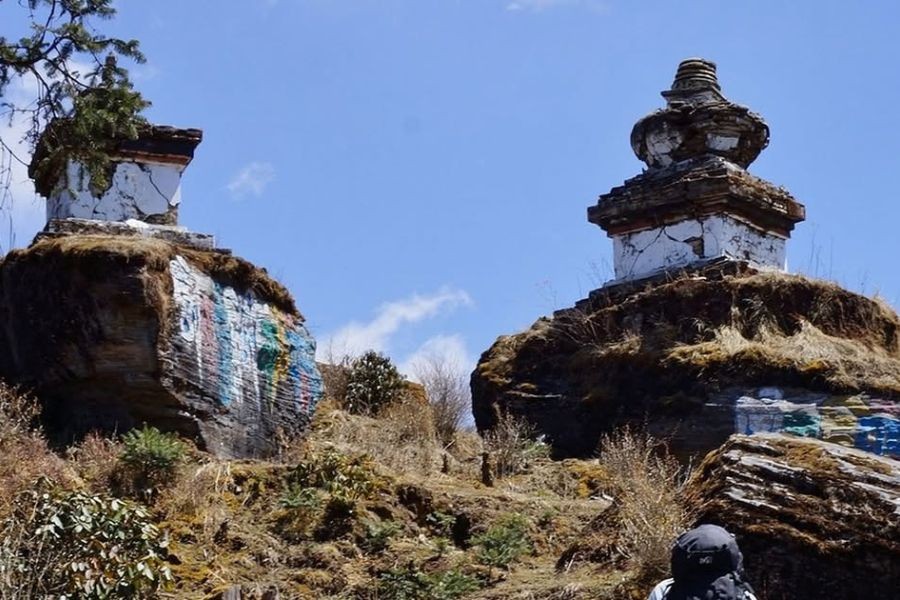
Altitude and Acclimatization
While we've touched on altitude already, it's worth emphasizing that proper acclimatization is critical to managing the Pikey Peak trek difficulty. The typical itinerary is designed to allow for gradual gain in elevation:
- Day 1: Transport from Kathmandu to Dhap (2,850m)
- Day 2: Trek from Dhap to Jhapre (2,820m)
- Day 3: Trek from Jhapre to Pikey Base Camp (3,640m)
- Day 4: Summit to Pikey Peak (4,068m) and down to Junbesi (2,675m)
- Day 5: Trek from Junbesi to Phaplu (2,413m)
- Day 6: Morning Flight or Drive to Kathmandu.
Your body can gradually adapt to the dropping oxygen levels thanks to this plan. Most trekkers find this acclimatization profile comfortable, but it's essential to:
- Stay well-hydrated throughout the trek
- Avoid alcohol during the higher elevation days
- Consider taking a rest day at Junbesi if you feel any mild symptoms
- Be prepared to descend if the symptoms intensify.
Weather and Seasonal Variations
.jpg)
The difficulty of the Pikey Peak trek varies significantly depending on when you go:
Spring (March-May)
- Moderate temperatures (5-20°C/41-68°F)
- Rhododendron forests in bloom
- Excellent visibility
- Difficulty: Moderate
Summer/Monsoon (June-August)
- Warm but wet with daily rainfall
- Muddy and slippery trails
- Leeches can be present at lower elevations
- Limited visibility due to clouds
- Difficulty: Moderate to Challenging
Autumn (September-November)
- Clear skies and excellent visibility
- Comfortable temperatures (5-15°C/41-59°F)
- Dry trails
- Difficulty: Moderate
Winter (December-February)
- Cold temperatures, particularly at higher altitudes (-5 to 10°C/23-50°F).
- Potential snow on trails above 3,500m
- Fewer trekkers
- Difficulty: Moderate to Challenging
Duration and Daily Walking Hours
The standard Pikey Peak trek typically takes 5-7 days, depending on your chosen itinerary and pace. The daily walking schedule involves:
- Walking time averages 5-7 hours every day.
- Morning departures (usually around 8 AM)
- Arrival at the next teahouse typically by mid-afternoon
- Rest stops for lunch and short breaks along the way
This schedule is manageable for most reasonably fit people, but it does require sustained energy levels throughout several consecutive days of hiking.
Fitness Level Required for Pikey Peak Trek
Recommended Physical Preparation
While the Pikey Peak trek doesn't demand exceptional fitness, being reasonably prepared will greatly enhance your enjoyment and reduce the perceived difficulty. Here's what we recommend:
Cardiovascular Fitness
- Ability to walk continuously for 2-3 hours on flat ground without exhaustion
- Regular cardio activities 2-3 times per week (walking, cycling, swimming)
- Ability to climb several flights of stairs without becoming severely winded
Strength Requirements
- Sufficient leg strength for uphill climbs and downhill descents
- Core strength for stability on uneven terrain
- Upper body strength for carrying a daypack (if not using a porter)
Endurance Considerations
- Mental stamina for consecutive days of trekking
- Physical endurance to maintain energy levels throughout the day
- Recovery capacity for day-after-day hiking
Training Recommendations
If you intend to ascend Pikey Peak, begin preparing at least 6-8 weeks in advance with:
- Walking/Hiking: Build up to 3-4 hour walks once weekly, preferably on hilly terrain
- Stair Climbing: 15-20 minutes of stair climbing 2-3 times weekly
- Cardiovascular Exercise: 30 minutes of swimming, cycling, or jogging 3 times weekly
- Strength Training: Focus on leg exercises like squats, lunges, and step-ups twice weekly
- Breaking in Boots: Wear your hiking boots on training walks to prevent blisters during the trek
Even modest preparation along these lines will significantly reduce the perceived difficulty of the Pikey Peak trek.
Preparation Tips for Pikey Peak Trek
Essential Gear for Pikey Peak Trek
The right equipment significantly affects your comfort and the perceived difficulty of the trek. Here's what you'll need:
Clothing
- Moisture-wicking base layers
- Insulating mid-layers (fleece or down)
- Waterproof and windproof outer layer
- Hiking pants (preferably quick-drying)
- Warm hat and gloves
- Sun hat
- Multiple pairs of hiking socks
Footwear
- Broken-in hiking boots with ankle support
- Comfortable camp shoes/sandals for evenings
Equipment
- Backpack (30-40L if using porter, 40-50L if carrying own gear)
- Trekking poles (highly recommended for steep sections)
- Sleeping bag (rated for 0°C/32°F)
- Headlamp with spare batteries
- Water bottles (minimum 2 liters capacity)
- Methods for purifying water (tablets, filters, or UV sterilizers)
Personal Items
- Sunscreen (SPF 50+)
- Lip balm with sun protection
- Personal medications
- Basic first aid kit
- Toilet paper
- Hand sanitizer
- Sunglasses with UV protection
Mental Preparation
Mental preparation is just as important as physical preparation for managing the Pikey Peak trek difficulty:
- Realistic Expectations: Understand there will be challenging moments, even on a moderate trek
- Patience: Accept that you may need to walk slower than usual at higher altitudes
- Flexibility: Be prepared to adjust your itinerary if needed for acclimatization
- Positive Attitude: A good mental outlook helps tremendously with physical challenges
- Adaptability: Be ready to adjust to basic accommodations and different foods
Food and Accommodations: What to Expect During Pikey Peak Trek
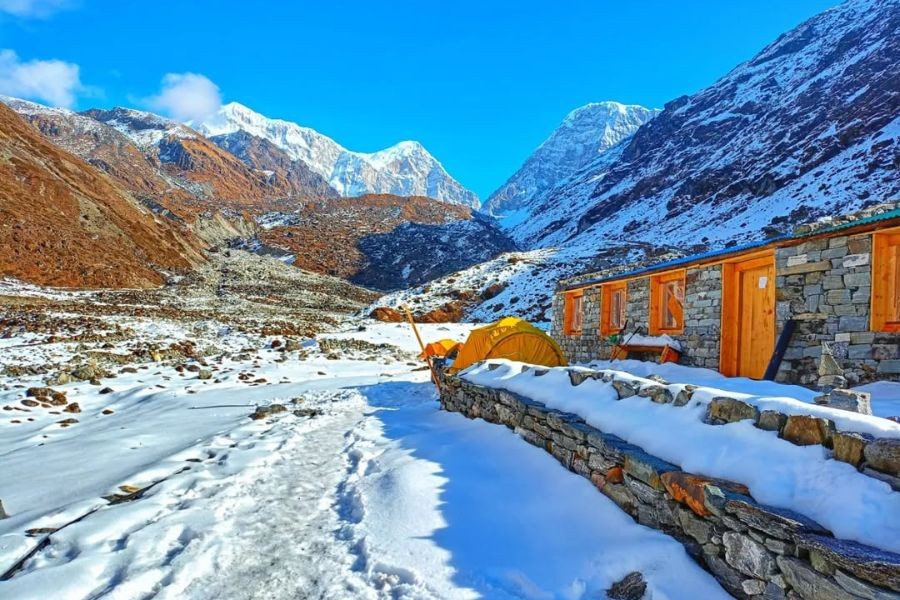
Teahouse Facilities
The accommodation on the Pikey Peak trek consists primarily of teahouses (simple lodges) in villages along the route. Understanding what to expect helps manage expectations and perceived difficulty:
Typical Teahouse Facilities
- Basic private rooms with twin beds
- Shared bathroom facilities (usually outside)
- Common dining area, often with a wood stove
- Minimal or no heating in bedrooms
- Limited or no electricity for charging devices
- Simple wooden structures with thin walls
Accommodations are generally more basic than in the heavily-touristed Everest and Annapurna regions, which adds to the authentic experience but may increase the perceived difficulty for those expecting more comfort.
Food Options
Food during the Pikey Peak trek is simple but hearty, designed to provide energy for daily trekking:
Breakfast Options
- Porridge/oatmeal
- Tibetan bread
- Chapati
- Eggs prepared various ways
- Pancakes
- Tea/coffee
Lunch and Dinner Options
- Dal Bhat (rice with lentil soup, vegetable curry, and sometimes pickle)
- Noodle soup
- Momo (Tibetan dumplings)
- Fried rice
- Pasta dishes
- Potatoes in various preparations
The menu becomes more limited as you ascend, with the most basic options available at higher elevations. Vegetarian options are readily available throughout the trek.
Water Availability
Safe drinking water is essential for preventing illness that could increase trek difficulty:
- Bottled water is available for purchase at most teahouses
- Boiled water is usually available for a small fee
- Streams and taps are present along the route but require purification
- We recommend packing water purification tablets or filters.
Does the Pikey Peak Trek Require a Guide and Porter?
Advantages of Hiring a Guide
While the Pikey Peak trek can technically be done independently, hiring a guide offers several advantages that can significantly reduce the perceived difficulty:
- Navigation: Although the main trail is generally clear, side paths and poor weather conditions can make navigation challenging
- Cultural Insights: Guides provide valuable information about local customs, traditions, and points of interest
- Communication: They bridge the language gap with local teahouse owners and villagers
- Safety: Skilled tour leaders are prepared to identify and handle altitude sickness and other crises.
- Logistics: They handle arrangements for accommodation and sometimes meals
Porter Considerations
Hiring a porter can significantly reduce the physical difficulty of the trek:
- Porters typically carry up to 15kg (33lbs) of your gear
- This allows you to trek with just a daypack containing essentials
- Cost is relatively reasonable (usually $15-25 per day)
- Reduces physical exertion, especially on steep sections
- Provides employment for local communities
For many trekkers, especially those concerned about the physical demands, hiring a porter transforms the Pikey Peak trek difficulty from moderate to easy-moderate.
Transportation and Accessibility to Pikey Peak Trek
Getting to the Trailhead
The journey to the Pikey Peak trailhead is part of the overall trek experience and affects the perceived difficulty:
From Kathmandu to Dhap (Starting Point)
- Approximately 8-10 hour drive
- Public buses available but can be crowded and uncomfortable
- Private jeep is more comfortable but more expensive
- Some road segments are winding and uneven.
Alternative Starting Points
- Take a 30-minute fly from Kathmandu to Phaplu, then hike back the other way.
- Start from Jiri for a longer, more gradual ascent
Road Conditions and Challenges
The drive to the trailhead can be difficult:
- Sections of unpaved road with potholes
- Occasional landslides during monsoon season
- Mountain roads with sharp turns and steep drops
- The possibility of traffic or road conditions causing delays
This initial journey should be factored into your overall assessment of the trek's difficulty.
Can Beginners Do the Pikey Peak Trek?
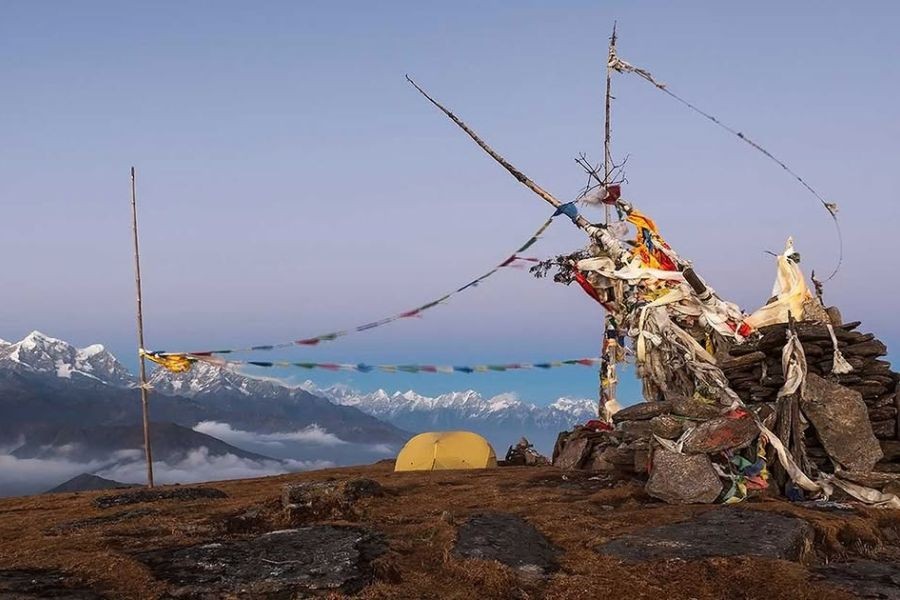
Suitability for First-Time Trekkers
One of the most common questions about Pikey Peak trek difficulty is whether beginners can handle it. The answer is a qualified yes:
Favorable Factors for Beginners
- Relatively short duration (5-7 days)
- Moderate maximum altitude (4,068m)
- Teahouse accommodation throughout (no camping required)
- Well-established trails
- Gradual ascent profile
Considerations for Beginners
- Should have basic fitness level
- Must be comfortable with basic accommodation
- Should prepare with some hiking experience
- Need to understand the importance of proper pacing
For a first-time trekker in the Himalayas, Pikey Peak represents an excellent introduction that offers spectacular views without the extreme challenges of higher and longer treks.
Success Strategies for Beginners
If you're a beginner contemplating the Pikey Peak trek, these strategies will help ensure success:
- Train adequately: Focus on uphill walking and stair climbing
- Hire a guide: A knowledgeable guide reduces uncertainties and enhances safety
- Consider a porter: Reduces physical demand significantly
- Select the appropriate time of year: The most comfortable seasons are spring and fall.
- Include buffer days: Include flexibility in your schedule for relaxation or acclimatization.
- Go slow: "Pole pole" (slowly slowly) is the mantra for successful high-altitude trekking
- Stay hydrated: Drink at least 3-4 liters of water daily during the trek
With these strategies, most beginners find the Pikey Peak trek challenging but entirely manageable and immensely rewarding.
FAQs About Pikey Peak Trek Difficulty
What level of fitness is required for the Pikey Peak trek?
You should be able to walk comfortably for 5-7 hours daily with a light pack. Regular exercise 2-3 times weekly for at least 6 weeks before the trek is recommended. If you can walk uphill for 2-3 hours continuously without extreme fatigue, you'll likely manage the trek well.
Is altitude sickness common on the Pikey Peak trek?
Altitude sickness is less common on Pikey Peak compared to higher treks like Everest Base Camp, but it's still possible. Some hikers may experience moderate symptoms at the maximum elevation of 4,068 meters. Most standard itineraries include proper acclimatization days to minimize this risk.
Can I trek Pikey Peak without a guide?
Technically yes, but it's not recommended, especially for first-time trekkers in Nepal. A guide provides valuable navigation assistance, cultural insights, emergency support, and helps with logistics. A guide provides security and company for solo trekkers as well.
When is the ideal time of year to trek Pikey Peak?
Spring (March-May) and autumn (September-November) offer the best conditions with clear skies, moderate temperatures, and dry trails. October is particularly popular for exceptional mountain views. Winter trekking (December-February) is possible but colder with potential snow at higher elevations.
How cold does it get on the Pikey Peak trek?
Temperatures vary significantly with altitude and season. During peak trekking seasons (spring and autumn), daytime temperatures range from 10-20°C (50-68°F) at lower elevations to 5-15°C (41-59°F) at higher points. Nighttime temperatures can drop to around 0-5°C (32-41°F) at higher elevations. Winter sees temperatures drop significantly, potentially below freezing at night.
Does the Pikey Peak trip require any specific gear?
No technical climbing equipment is required, but proper trekking gear is essential: good hiking boots, warm layers, a waterproof jacket, a sleeping bag rated for 0°C (32°F), and trekking poles (highly recommended for steep sections). This article's preparation section includes a detailed packing list.
How long does the entire Pikey Peak trek take?
The standard itinerary takes 5-7 days, depending on your pace and whether you include buffer days. Adding extra days for acclimatization or side trips to monasteries and villages can extend this timeframe.
Is the Pikey Peak trek crowded?
No, and this is one of its greatest appeals. Unlike the heavily trafficked Everest Base Camp or Annapurna Circuit treks, Pikey Peak remains relatively uncrowded even during peak seasons. You'll encounter other trekkers but never experience the crowds found on more popular routes.
Conclusion
The Pikey Peak trek represents an ideal balance of challenge and accessibility in the Nepali Himalayas. With its moderate difficulty level, manageable altitude profile, and spectacular views of the world's highest mountains, it offers an authentic trekking experience without the extreme demands of higher and longer treks.
For beginners, it serves as an excellent introduction to Himalayan trekking, offering a taste of the region's remarkable landscapes and rich cultural heritage without overwhelming physical challenges. For experienced trekkers, it provides a less-crowded alternative to popular routes while still delivering unforgettable mountain vistas.
A flexible mindset, reasonable expectations, and adequate preparation are essential for a successful Pikey Peak trek. By understanding the factors that contribute to the trek's difficulty level—altitude, terrain, weather, and physical demands—you can prepare appropriately and maximize your enjoyment of this remarkable journey.
Whether you're drawn by the famous sunrise views from the summit, the authentic Sherpa villages along the route, or simply the allure of walking in the shadow of the world's highest mountains, the Pikey Peak trek offers a rewarding adventure that is within reach for most reasonably fit trekkers.
As Sir Edmund Hillary reportedly said about the view from Pikey Peak, it offers "the best view of Everest" and perhaps the perfect balance of challenge and reward in the magnificent Himalayan mountains.
Ready to embark on your Pikey Peak adventure?
Whether you're a beginner or an experienced trekker, our expert team is here to guide you every step of the way. Inquire now at [email protected] or join our free online briefing on WhatsApp: +977 9851006023 (Bikesh). Let’s make your Himalayan dream a reality!
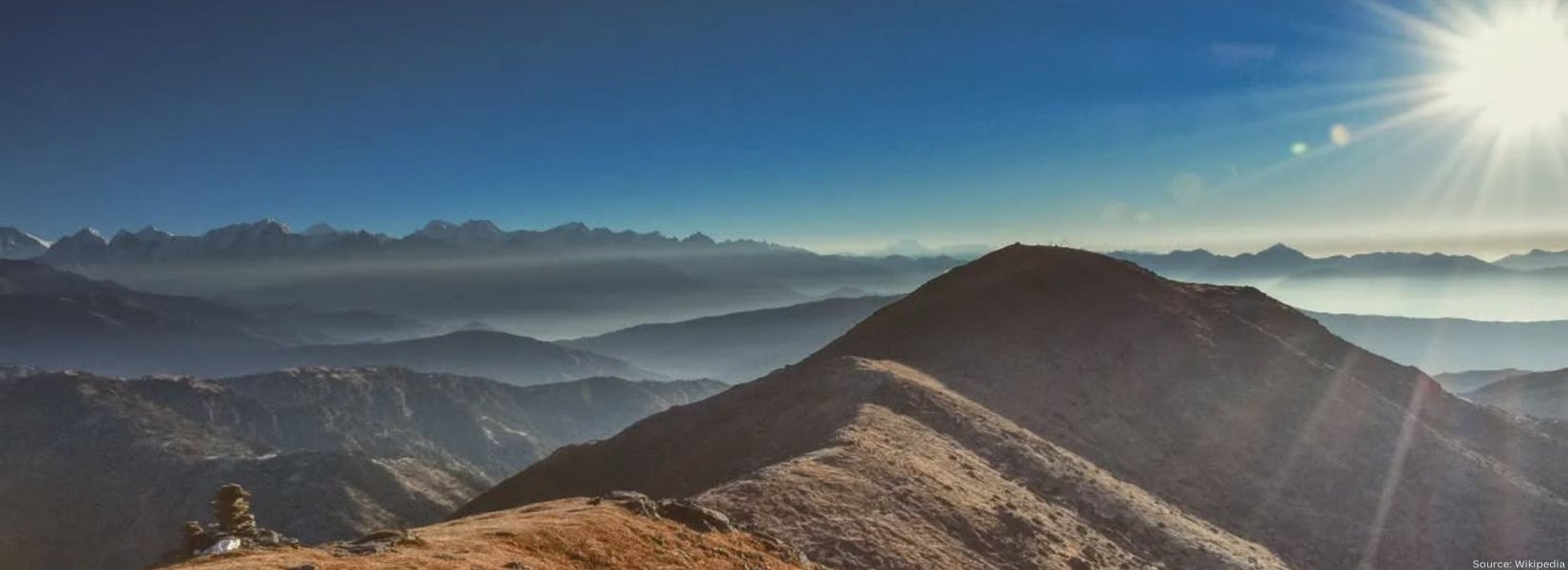


.jpg)


